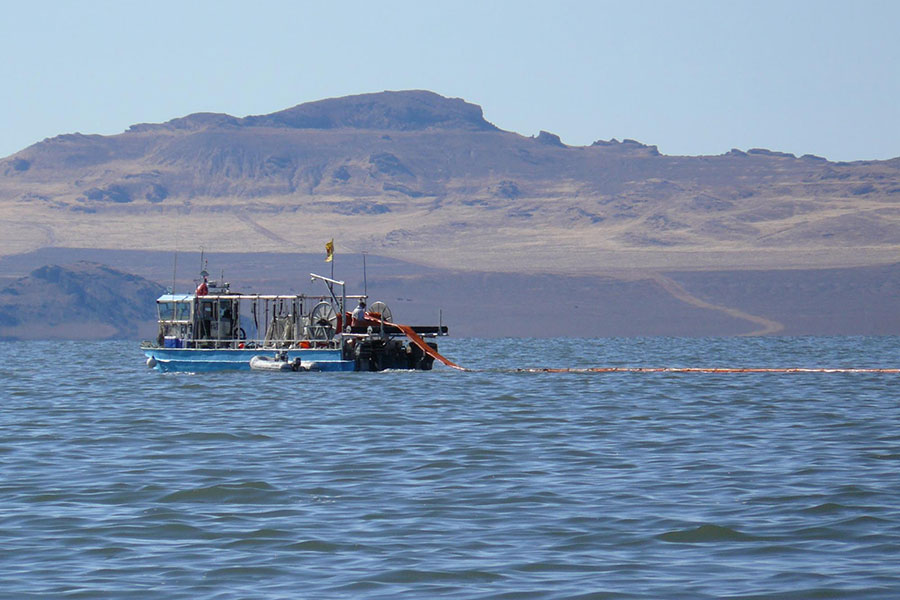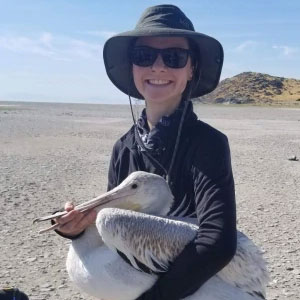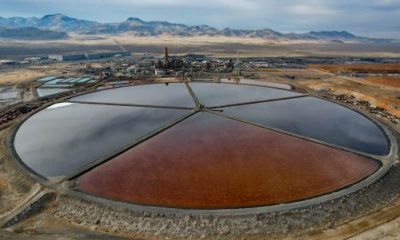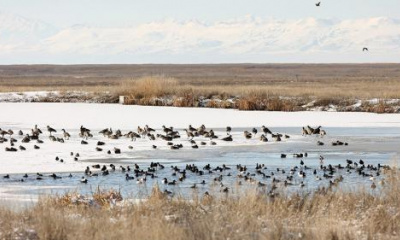New research suggests that as Great Salt Lake shrinks and gets saltier, brine shrimp, a staple food for migrating birds and a boon to Utah’s economy, may be in danger of dramatic population declines.
Brine shrimp are hardy crustaceans that live in the warm salty waters of Great Salt Lake. The brine shrimping industry, which harvests brine shrimp eggs, called cysts, to sell to aquaculture businesses as fish food, brings in millions of dollars to Utah’s economy each year, and many birds that use the lake to nest or refuel during migration rely on them for food. However, with the lake shrinking due to drought and water consumption, a new model suggests our brine shrimp are at risk.
Gary Belovsky, an emeritus professor at the University of Notre Dame, created a model that helps predict how well brine shrimp cysts, larvae, and adults survive up to five years into the future, depending on Great Salt Lake conditions, including salinity levels, food availability and type, and water temperature.
By adjusting lake conditions, Belovsky can predict what may happen to the brine shrimp population. While the type of food and the amount available is a powerful driver of how well brine shrimp can survive and reproduce, as Great Salt Lake gets increasingly salty as it dries up, Belovsky’s model predicts high salt levels will spell trouble for the shrimp.
“What is the effect of the higher salinities we're seeing right now on the brine shrimp?...what would happen if the salinity goes to 18 percent?...I ran the model at that level, and within two years things really crash,” Belovsky explained.
Great Salt Lake salinity levels reached 18 percent in mid-September.
Adult brine shrimp die each year over the winter, but before they do, they lay cysts that hatch the next spring when conditions are right. At these high salt levels, brine shrimp have to spend a significant amount of energy managing salt levels in their bodies, leaving them with little energy to produce cysts. As a result, with fewer brine shrimp hatching each spring, the population may not be able to sustain itself, leading to a dramatic population decline.
Fortunately, spring snowmelt and rain often bring enough water to Great Salt Lake that salinity levels drop in the springtime, giving the brine shrimp a break from high salt levels and a chance to put energy into producing the next generation of brine shrimp. But, as the lake shrinks and gets increasingly salty, we may reach a point where even seasonal inflows won’t bring salinity levels below 18 percent.
This year’s monsoon season has helped alleviate drought conditions across the state and may be increasing water flows headed toward Great Salt Lake. However, Belovsky said with high water consumption across northern Utah, the rain hasn't been enough.
“Rain is not getting to the lake. It's either being used before it gets to the lake or it's evaporating faster than it used to be…I would guess it's being used,” Belovsky said.
Although brine shrimp are small, they’re a critical food source for millions of migratory birds that stop at Great Salt Lake to refuel. Eared grebes, which are small waterbirds, eat almost exclusively brine shrimp to build fat stores for migration and grow new feathers.
Michael Conover, a USU professor, said up to 95% of all eared grebes in North America stop at Great Salt Lake during migration.
“If you're looking at when the grebes are on the Great Salt Lake, it’s 95%...once eared grebes are here, they cannot fly. So they're stuck. And if they could fly, there's no other hypersaline lake in North America that could sustain them all. So it could be a dark future,” Conover said.
Drought and water consumption are changing the relationship between birds and brine shrimp in other ways as well.
John Luft, who manages the Great Salt Lake Ecosystem Program for the Utah Division of Wildlife Resources, said northern shovelers, a species of duck that normally eats seeds that collect in bays around the lake, have instead been venturing farther from shore in the winter to eat brine shrimp cysts because the bays they typically feed in are dry or frozen.
While adult brine shrimp provide plenty of nutrients for birds that eat them, like eared grebes, brine shrimp cysts don’t offer the same benefits. As a result, shovelers that have been eating their fill of cysts are failing to digest them and get enough nutrients from the cysts to survive.
“We actually saw shovelers that were starving to death…and we've had that happen a couple of different years. We had it happen this year…I mean, the birds would be basically emaciated,” Luft said. “So we sent them in for testing, because well, maybe it's a disease. There was no disease associated with it. It was just that they were starving to death, but that was the only food source that they had.”
Recent initiatives to reduce state water consumption and allocate water to Great Salt Lake offer some hope for the lake’s water and salinity levels, but Utah’s growing population and ongoing drought conditions are likely to put increased stress on Utah’s water systems in the future.









